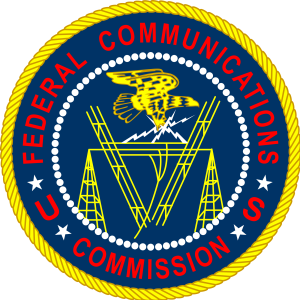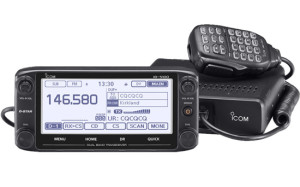We typically think about cell phone service closing down either because of downed towers or massive overload during a disaster or an emergency. Broadcast stations as well as police and emergency services can also shutdown for similar reasons.
POWER OF COMMUNICATION OPTIONS
Those services are typically tied to a single approach for communication, however, amateur radio isn’t limited. Sure, on VHF/UHF a repeater might go down but that just means we need to go simplex. Or, amateur operators can readily set up a portable repeater system to get things going once more.
Plus, operators have numerous frequency options. VHF and UHF not working? Go to HF and use a net control station that’s at a suitable distance to make things work. Plus, HF has the advantage of bringing in communication resources across the country and if need be, around the world.
POWER OF VOLUNTEERS
I also love that amateur radio not only tackles the nearly infinite variety of technology available within the hobby, but it also harnesses the fantastic power of volunteers.
Just as with the limited technical resources available within the cell phone network or the local community’s public communication system, these systems are also limited by their trained and available employees. Not so with amateur radio. We have a tremendous number of trained and available individuals with a high degree of expertise and commitment to help out in times of emergency.
HAM RADIO TRAINING
The training required to qualify for an amateur radio license is a big help in emergencies. ARRL offers several online emergency communication courses and many local ham radio clubs have it as their primary purpose preparing for and reacting to local emergency situations, particularly weather related disasters. Plus, SKYWARN, Red Cross, and FEMA training options are also available. All this training is very important to preparing amateur radio operators to help with emergency communication.
HAM RADIO EXPERIENCE
OK, so we’ve got some radios and training but what do we do with it all? I’ve found that most of the clubs that focus on emergency communication get the team out to support local events such as marathons, bicycle rides, or parades. There’s also ARRL Field Day which tests operators’ abilities to set up a station, get on the air, make contacts, and exchange messages.
Then, there is the routine maintenance and activation of the club station, including getting out all the gear and making sure it still works. There are lots of ways to prepare for that emergency that may prove to be just around the corner.
DEEPER DIVE – FCC RULES & REGULATIONS
 But let’s dive deeper into emergency communication and look closely at FCC Part 97 Rules and Regulations. This document, which most Hams hold dear to their heart, outlines the role for Emergency Communications, aka EmComm, for Amateur Radio.
But let’s dive deeper into emergency communication and look closely at FCC Part 97 Rules and Regulations. This document, which most Hams hold dear to their heart, outlines the role for Emergency Communications, aka EmComm, for Amateur Radio.
97.1(a) Recognition and enhancement of the value of the amateur service to the public as a voluntary noncommercial communication service, particularly with respect to providing emergency communications.
What does this really mean?
Some feel this is all that is needed when a manmade or natural disaster occurs and jump directly to 97.1(d)
97.1(d) Expansion of the existing reservoir within the amateur radio service of trained operators, technicians, and electronics experts.
Yes, Amateur Radio enthusiasts who are involved with emergency communications build their skills in knowing the rules and regulations, build up their code speed, become experts on radio networking, IP networking, and all things electronic.
TECHNICAL SKILLS VS. HUMAN SKILLS
Too often, it is this level of expertise where the most important part of all the networks get lost — the human networking. While we are communicators, too often we get caught up in our expertise, and we don’t communicate. Instead, we command, and as a result forget the most important sections of part 97.1.
97.1(b) Continuation and extension of the amateur’s proven ability to contribute to the advancement of the radio art.
Yes, even in an emergency, there is radio art. It is not the antennas we create from wire, or the go kit we have built. It is the finesse of taking a voice, message, or spreadsheet and with the magic of RF, we get the message through all the mess. While we enjoy the theory and skills to get the message from point “A” to point “B”, those we serve in these situations just want to make it happen.
97.1(c) Encouragement and improvement of the amateur service through rules which provide for advancing skills in both the communication and technical phases of the art.
Yes, even in an emergency, the rules exist. Too often, the phase “In an emergency” is thrown into a conversation when the “what if” discussion occurs. In a crisis, the most important thing to do is maintain calm amid all the chaos.
FIRST RESPONDERS – HAMS CAN PROVIDE NEEDED ASSISTANCE
While you may be the first to arrive on the scene of an accident, using your knowledge and skills do not authorize you to jump over to the local public safety frequency and try to coordinate the first responders’ efforts. While some may find it hard to believe, there are first responders who dread hearing the words, “I’m a Ham Radio Operator, I am here to help!”
97.1(e) Continuation and extension of the amateur’s unique ability to enhance international goodwill.
Here is where we can help the most! Remember, Amateur Radio is about goodwill. Spread the goodwill by kindness and understanding.
Understand what your real role will be in an emergency. While there are many public safety officials who are licensed and active amateur radio operators, they are the trained professionals.
While there are levels of Amateur Radio training for EmComm, remember, the radio communications “SUPPORT” their real role. If you want to help, get the proper training for the Radio side of the support but also partake in the other training aspects of the role you play.
AMATEUR RADIO IN ACTION
If you need further insight into how amateur radio can help with emergency communication, I like Gary Pearce’s (KN4AQ) video on how amateur radio helped during Hurricane Katrina in New Orleans. It opens with a television news broadcast and then shows the actual communication underway via HF from a distance.
This video shows that you can get involved supporting emergency communication from wherever you happen to be. But, it’s also more likely that you’ll be better positioned to help in your own community and neighborhood. So, if you’re not already involved in an active club supporting emergency communication, I suggest that you find one and get involved.
You can make a difference with your amateur radio skills and experience. But don’t forget the softer side of that skill. Working with others to truly serve those first responders.
ICOM’S EXPERIENCE AND EXPERTISE
What I like about working at Icom America is that we have so much expertise available from the land mobile, avionics, and marine divisions of our business. Each division has such impressive capabilities that are already deployed around the world in daily service as well as in emergency situations.
Our amateur radio line of products take full advantage of this expertise in building some of the best gear available for all aspects of our hobby and in particular its application to emergency communication.
D-STAR is one aspect that stands apart for amateur radio. What I really appreciate is not only the crystal clear communication, but also the embedded GPS information that can really help with emergency communication.
The land mobile division utilizes the Icom Digital Advanced System (IDAS), that provides crystal clear communication across a wide array of applications including systems with independence from the public power grid.
Coupled with Icom’s marine and aviation products and systems, Icom provides first responders, law enforcement, and emergency personnel with the communication they need to rely on to accomplish their missions.
73,
Ray Novak, N9JA
Senior Sales Manager
Lifetime Amateur Radio Enthusiast


